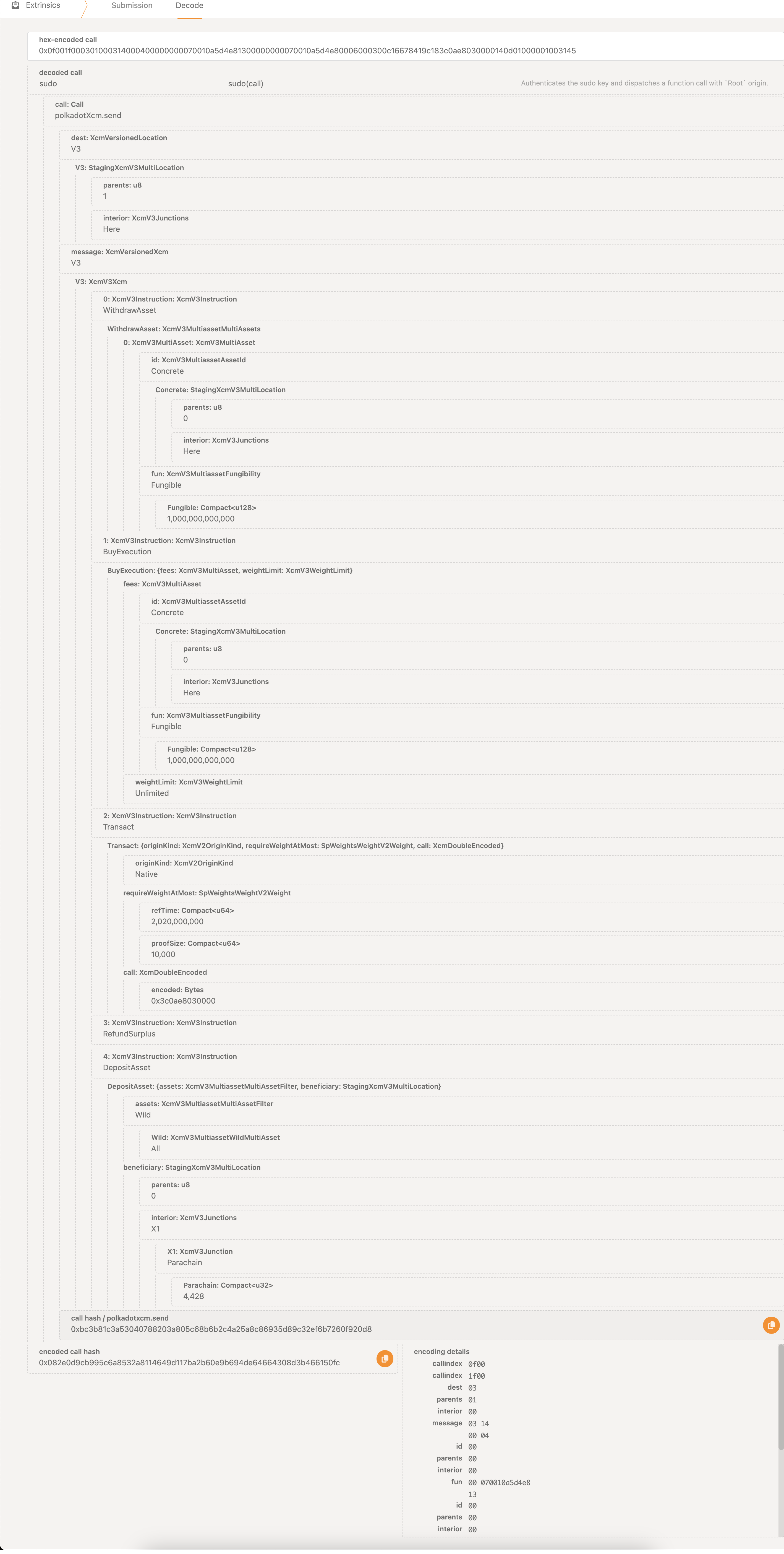Opening HRMP Channels
In order to communicate over HRMP, parachains must establish channels by registering them on the relay chain. Like XCMP, HRMP is a message transport protocol, but passes all messages via the relay chain. When XCMP is implemented on Polkadot, HRMP is planned to be deprecated and phased out.
HRMP channels are uni-directional. Bi-directional communication between two parachains will require two channels, one in each direction.
Opening HRMP Channels
Opening a channel between two parachains is a two-phase process, with one chain first initiating a
channel request and then the second chain accepting it. When neither chain is a
system chain, they will use the hrmpInitOpenChannel and
hrmpAcceptOpenChannel calls, respectively.
Each chain must dispatch the following calls on the relay chain from its parachain origin.
-
hrmp > hrmpInitOpenChannel(recipient, proposedMaxCapacity, proposedMaxMessageSize): Initiates channel establishment by creating a channel request with a given configuration. Note that the max capacity and max message size must be within theconfiguration's limits. -
hrmp > hrmpAcceptOpenChannel(sender): Accept the channel open request from the given sender.
In order to dispatch a call from its sovereign origin, a parachain may use governance to send the
encoded call in a Transact instruction to the relay chain, but it may also execute this logic
autonomously (e.g. on the notification that a channel was requested).
Examples of HRMP Channel Management
There are several ways to trigger a specific message from a parachain's origin. The naive way is to
write the program off-chain and submit it using the XCM pallet's send extrinsic. Sending arbitrary
programs is gated by a privileged origin, so who can initiate that depends on each chain's
configuration. The chain may need to go through governance to dispatch the extrinsic.
Another option is to write the programs that a chain will send ahead of time and incorporate them into the runtime. These programs could be behind extrinsics with their own privileged origins, or even unprivileged origins. As the extrinsic can perform any checks prior to sending the message, the runtime developer can program things like allowing any signed origin to dispatch a call accepting an open HRMP channel request with another parachain.
Note that this is actually how other extrinsics (e.g. to teleport assets) in the XCM pallet work; they construct XCM programs locally from a user's inputs and, assuming all checks pass, send the program to the destination.
In addition, the logic could be autonomous and react to other instructions that the chain receives.
For example, see Polimec's
implementation
of the XcmExecutor, which handles notifications of channel requests and acceptance.
Opening HRMP Channels with System Parachains
The
establish_channel_with_system
call can be used to establish a bi-directional channel between any parachain and a system chain.
This call needs to be dispatched from the parachain via an XCM program to execute on the Relay
Chain.
For instance, the call to be executed on the relay chain to establish a bi-directional channel
between a parachain and the Asset Hub with ParaID 1000 is 0x3c0ae8030000

Here is an example call with an XCM program sent from the parachain to Paseo relay chain to
establish channel a bi-directional channel with Paseo Asset Hub -
0x0f001f000301000314000400000000070010a5d4e81300000000070010a5d4e80006000300c16678419c183c0ae8030000140d01000001003145

Opening HRMP Channels Between Two System Parachains
As of Polkadot and Kusama runtimes 1,001,000, anyone can call an establishSystemChannel extrinsic
with two system parachains as arguments in order to establish a channel from the given sender to
receiver.